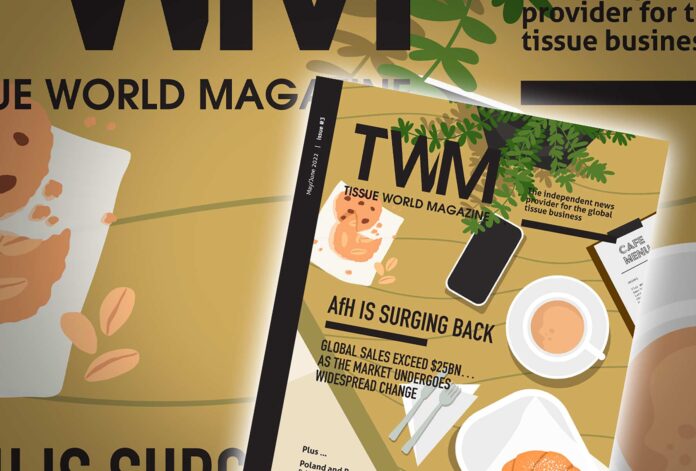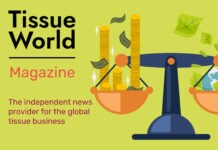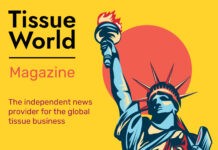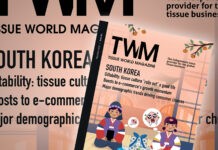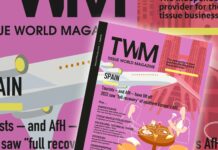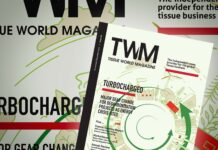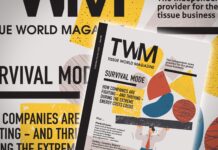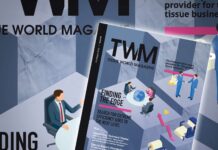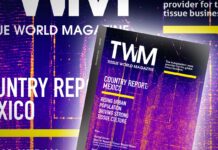Tissue’s hardest hit sector during the pandemic is surging back. Global AfH sales reached $25bn msp by Q4 2021, so will now be more still.

In TWM’s MarketIssues, Euromonitor International’s Liying Qian breaks down the sector’s figures further: the boxed facial tissues market is worth $2.3bn msp, paper tableware $6.9bn, paper towels $5.8bn, toilet paper $7bn, wipers $3.1bn. All 2021 figures.
A sustained return is not yet certain. The market will continue to change as it develops, and this comprehensive analysis examines a range of expected trends, not just in the immediate future, but projected ahead for 20 years. Growth trends will not be universal, and continental and regional variations suggest years of time lag.
Key points include: China, barring more recent events in Shanghai, essentially back to normal for now, while for the US and other regions not so until 2025; hygiene to be the main driver; most new growth potential in less mature developing regions “where a health-centric lifestyle shift, increased disposable income, rising urbanisation and improved institutional infrastructure will continue driving category growth”.
Several of those trends are reaffirmed in ExitIssues, where evidence is growing of a huge potential growth market emerging. Sumit Khanna, Chief Executive of New Dehli-based Beeta Tissues, doesn’t hide his “surprise” at various recent developments in the market there. He reports “a huge upsurge in demand for tissues” in schools, hotels and offices on the back of a renewed awareness of hygiene demands. And an intriguing concept, what he calls “revenge” tourism. This is a new determination, having been restricted for so long, to get out and travel.
Much of Euromonitor International’s research was completed before the events unfolding in Ukraine and the subsequent further strains imposed on already existing stress within global economies, so growth conditions projected in the analysis must all be weighed in that context: a global recovery hinging on consumers’ financial confidence at a time of dramatically increasing costs; the health of the foodservice and hospitality industries; continued virus control and hygiene product improvement.
That, at the present time, seems like a list of the areas of life under some measure of threat. Much effort has been put into imagining the much-anticipated post-pandemic ‘new normal’. With a new element added to the ‘perfect storm’ of economic stress, that opportunity still seems a way off.
From a low base, Poland and Romania are developing a robust consumer-driven product economy
When TWM visited Poland in 2019 there was plenty of evidence of the consumer choice revival which began after the end of the Soviet years. That potential was showing real results.
Poland’s overall real GDP was $1,223bn in 2020, with a growth rate of 4.55% in 2019. Romania’s real GDP was $556bn in 2020, with a growth rate of 4.2% in 2019.
The arrival of supermarkets and discount stores had a big impact resulting in changing trends which instigated a consumer shift from standard to economy tissue products. Disposable incomes were rising, with underdeveloped tissue categories springing to life.
Many new factors complicate the future in both countries, as TWM’s Regional Report shows. Poland and Romania both share a border with Ukraine, costs are rising across the board and immigration levels are such that social structures are stretched. While inflation is squeezing incomes, on the population metric both countries have experienced an unprecedented level of population change.
For tissue, much will depend on which increasingly highly priced essential items consumers will spend dramatically reduced income on. All indicators suggest the market will be significantly different again in the coming years.





















